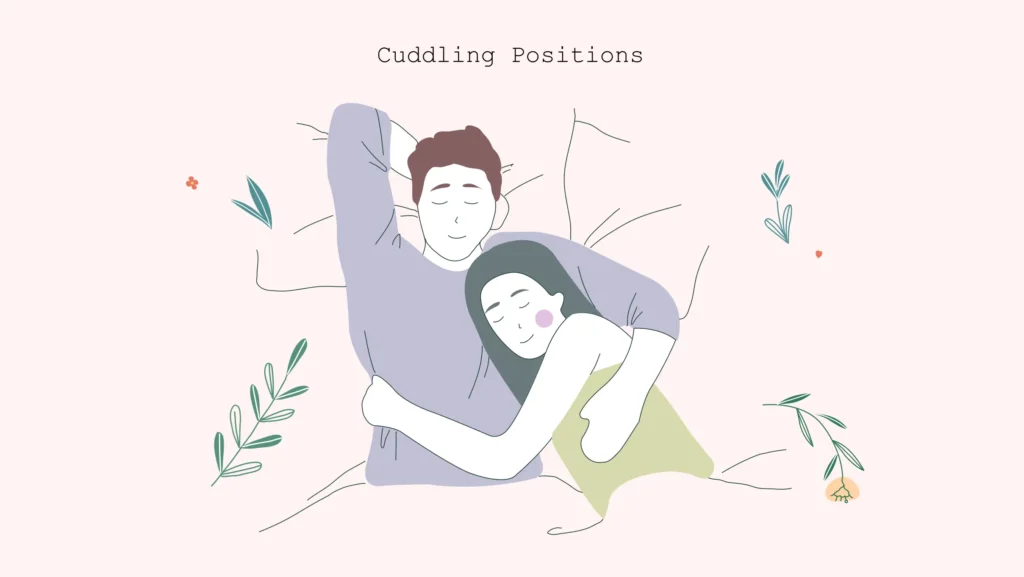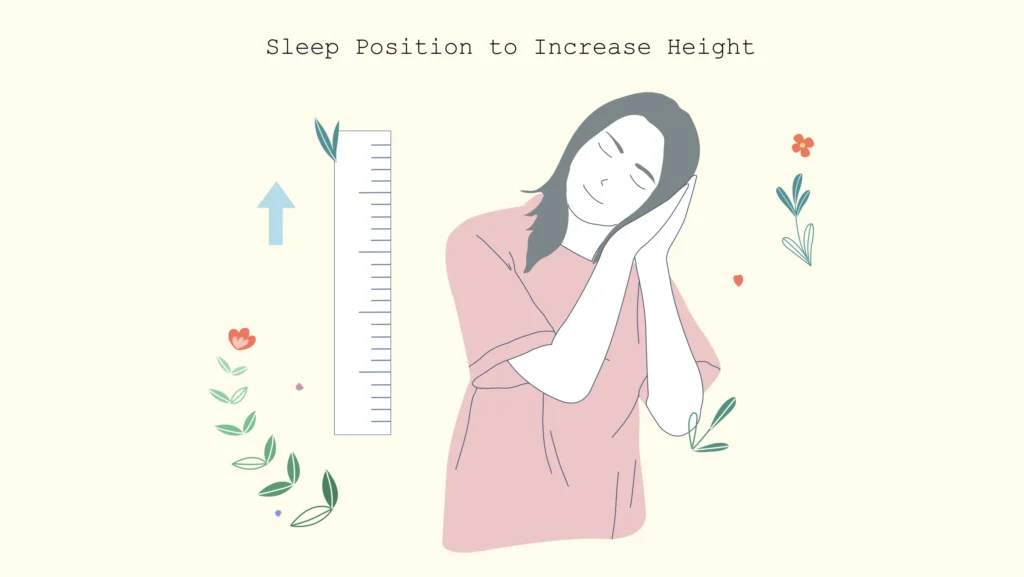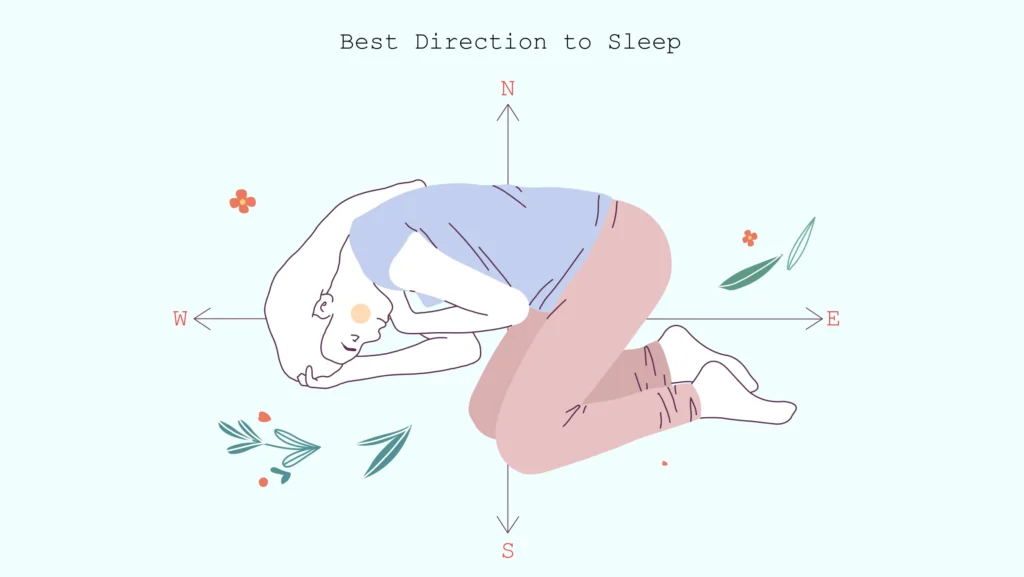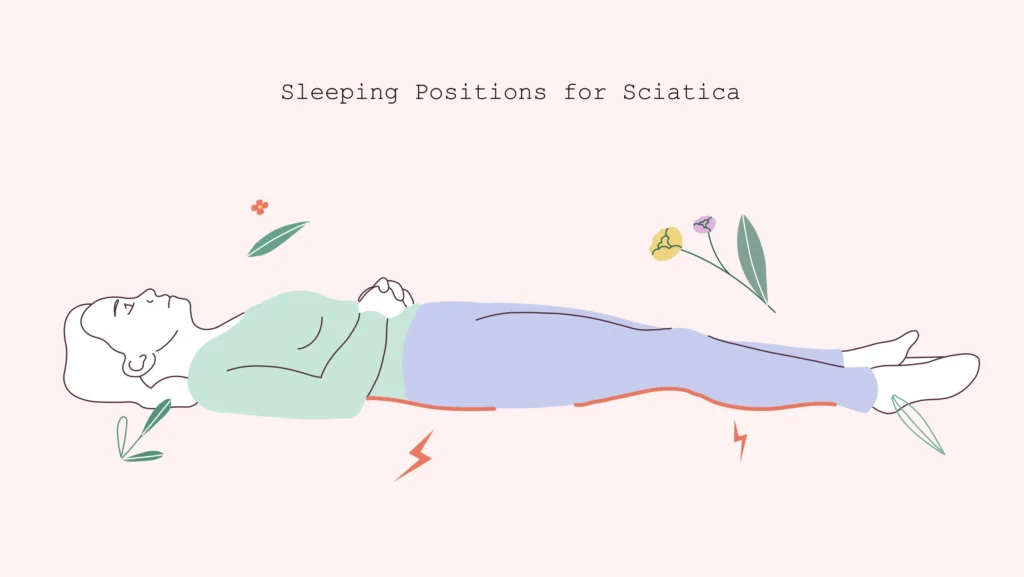How to Sleep on your Back
Written by

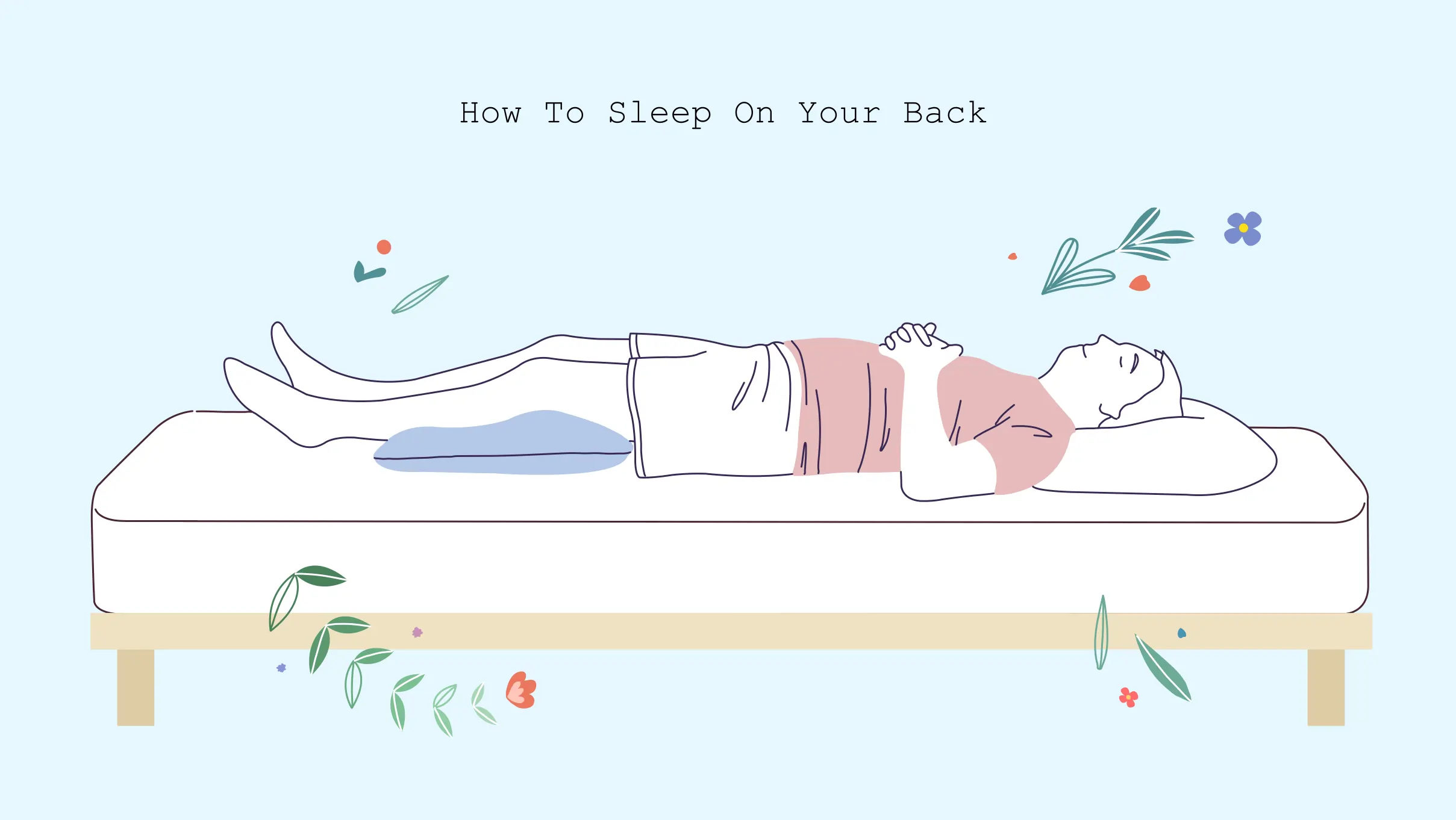
Table Of Content
Sleeping on the back or sleeping in a supine position is loaded with numerous benefits. Some people sleep with their arms and legs spread out like starfish, while others sleep keeping their arms at their sides. Some health benefits of sleeping on the back include spine alignment, reduced wrinkles, headaches, and more. If you are someone planning to switch to back sleeping and wondering how to sleep on your back? Then this article is for you.
Embracing the following ways will help you learn how to sleep on your back.
Place a Pillow Underneath Your Knees
Want to know how to sleep on your back? Start by placing one to two regular pillows under your knees. Placing pillows under your knees might help in spine alignment as they will stay slightly bent and feel comfortable. But how to know if you have purchased the right pillow? Follow the below steps.
- First, lie down
- Ask a friend or a family member to check the distance between the knees and the mattress
- The pillow will act as a supporter of the natural curve of your body
- You can consider stacking two flat pillows under your knees
Once placed, ensure that you are in a comfortable position. If not, make adjustments accordingly to your pillow and body positions.
Place a Pillow Under Your Lower Back
If you are someone who experiences lower back pain when sleeping on your back, placing a pillow under your back might be the solution. Placing a pillow under your lower back can be effective in relieving the pain as it acts as an additional cushion, and thus this is often known as the low back pain sleeping position. You need to try placing different kinds of pillows to understand what suits you.
Surround Yourself With Pillows
Sleeping on the back might be tricky for restless sleepers, who tend to roll back to their stomach or side sleeping positions. If you are also one of them, try surrounding yourself with pillows. Placing pillows right around your midsection and hips might be beneficial in providing you with the support required. In addition, these pillows will help guard you while rolling over during the night.
Although, sleeping on the back with numerous pillows might not be the most suitable in case you are sleeping with a partner. It ought to take up quite some space.
Choose a Supportive Mattress
How to sleep on your back properly? One of the answers to this question is keeping your spine in the most aligned position. And, to support your spine and the whole body, sleeping on a supportive mattress is a necessity. A mattress with the most balanced firmness and thickness – preventing sinkage- is the ‘most wanted’ mattress for sleeping on the back.
A mattress having a medium-firm firmness level is the right fit for back sleepers. However, opting for a firm mattress topper is always an option if you don’t want to buy a whole new mattress. This will ensure that you keep your spine in the most aligned position.
Stretch Before Bed
If sleeping on your back is becoming too tedious, try including a 20 minutes routine before bedtime. The stretching needs to focus your back, leg, and neck muscles. This activity will improve circulation in all these body parts helping the sleeper relax. In addition, different yoga poses are available that alleviate sleep. Therefore, the next time you question how to sleep on your back, move your body and do some stretching.
The Starfish Position
A starfish position is when the sleeper spreads their back and arms overhead, resembling a starfish. This position helps reduce back pain, wrinkles, and spine alignment. Sleeping on your back in a starfish position might benefit your health.
Avoid Eating Right Before Bedtime
Eating right before bedtime leads to the malfunction of the natural circadian rhythm. Our bodies are functioned to sleep at night and wake after exposure to sunlight. And eating before bedtime leads to increased metabolism leading to disrupted sleep.
Benefits of sleeping on your back
Sleeping on the back has numerous benefits as has been explained below.
1. Great for Spine Health
Is it good to sleep on your back? Yes, it is, especially for people undergoing back pain. Sleeping on the back leads to a natural alignment of the head, neck, and spine. As a result, this alignment creates limited pressure on these areas leading to less pain.
2. Reduces Acid Reflux
People experiencing acid reflux might be benefitted from sleeping on their backs. Just ensure that you have your head elevated enough to place your oesophagus above your stomach.
3. Avoids Wrinkles and Fine Lines
When you sleep on your stomach or side, your face is smashed on the pillow leading to wrinkles. But, sleeping on the back prevents the possibility of having wrinkles.
4. Less Puffy Eyes
Sleeping on the back averts the chances of excess blood pooling under your eyes, unlike stomach or side sleeping. This might reduce the occurrence of puffy eyes, therefore.
5. Relieves Sinus Buildup
If you are experiencing sinus pain and congestion, sleeping on your back with your face up might help you relieve the pain. Sleeping on the back with the head above the heart reduces mucus build-up, preventing a considerable amount of blood flow from gathering in the nose.
When Not To Sleep On Your Back
There are some instances when sleeping on your back might be troublesome. Some of the conditions are described below.
1. Pregnancy
It is not suitable for pregnant women to sleep on their back, especially during their late pregnancy period. Research states that sleeping on the back might reduce blood flow to the fetus, leading to a rise in low birth weight. Side sleeping is an alleviating position for pregnant women, and pregnancy pillows provide good cushioning.
2. Obstructive Sleep Apnea
In this sleep disorder, the person experiences disordered breathing caused by blockages in their airway during sleep. And research states that severe sleep apnea symptoms are caused by sleeping on the back.
3. Chronic Snoring
Though snoring is not a sign of any underlying sleep disorder but can be frustrating and disruptive. Research states that sleeping on the back leads to increased snoring. You can reduce the problem by elevating your head with a second pillow. Or else, try sleeping on your side.
4. Heartburn
Sleeping on the back likely increases heartburn. If sleeping on the back is your favourite position, then try elevating your upper body with pillows or a wedge pillow to ease heartburn. Additionally, limiting the consumption of spicy, acidic, and fatty foods before bed might also relieve heartburn.
What Is the Best Sleeping Position?
There is no specific best sleeping position. Finding the best sleeping position depends on what kind of sleeper you are and what you are considering out of the sleeping position. For example, people experiencing sleep apnea will find sleeping on their back detrimental to their health; on the other hand, people undergoing back or neck pain might be benefitted from back sleeping.
Conclusion
Certain factors determine whether sleeping on the back is suitable for you. Sleeping on the back can be worthwhile for people experiencing sinus, puffy eyes, wrinkles, and fine lines, acid reflux, and, most importantly, spine misalignment. People trying to shift to back sleeping may incorporate placing a pillow under their knees and lower back for more support or opt for a supportive mattress, yoga before bedtime, and more.
FAQs
Why is it hard to sleep on my back?
Some people find sleeping on the back hard. For those people, placing a pillow under their knees and lower back might be helpful in reducing the discomfort.
Is it better to sleep on your back?
Sleeping on the back has numerous benefits like spine alignment, reduction in back and neck pain, reduced headache, and more.
What is the healthiest way to sleep on your back?
The healthiest way to sleep on your back is by placing a pillow under your knees and lower back to maintain the natural curvature.
How to sleep on your back without snoring?
To sleep on your back without snoring, try these:
- elevate your head
- use a firm, high-loft pillow
- maintain proper sleep posture
- clear nasal passages,
- Train your mouth with exercises like tongue and palate elevation
people like this article
Written by




